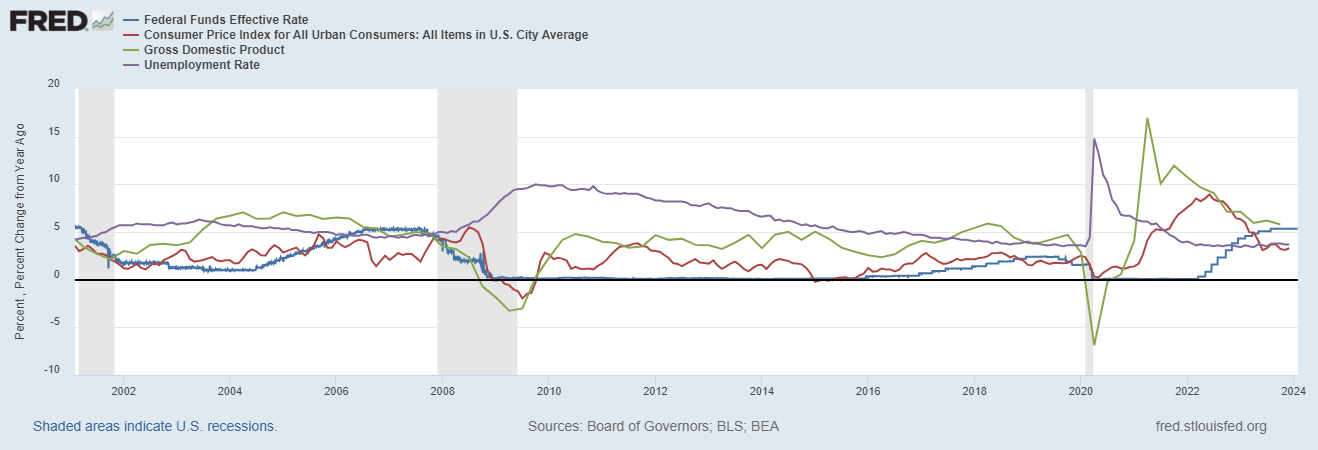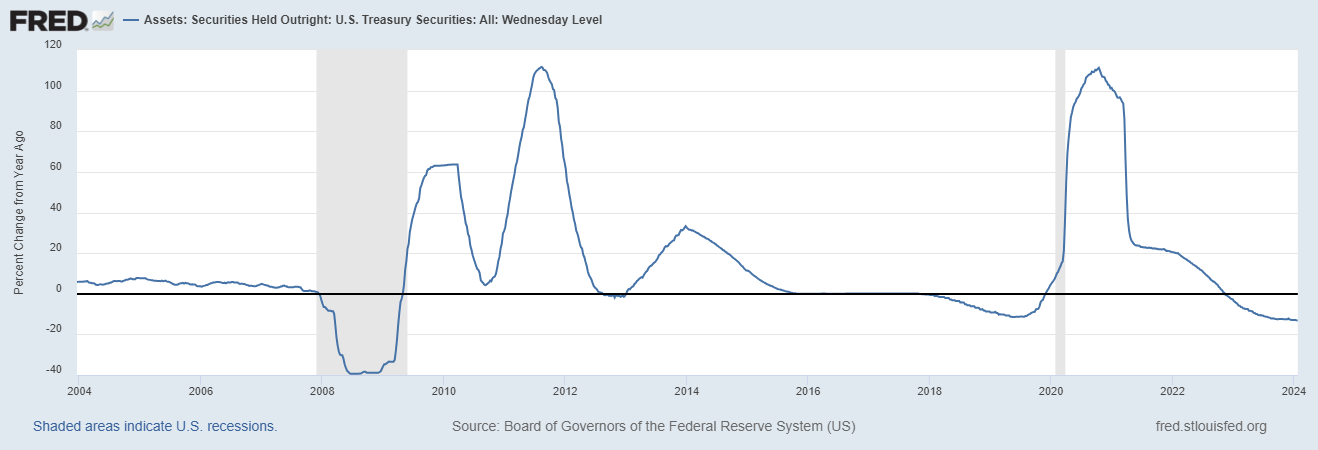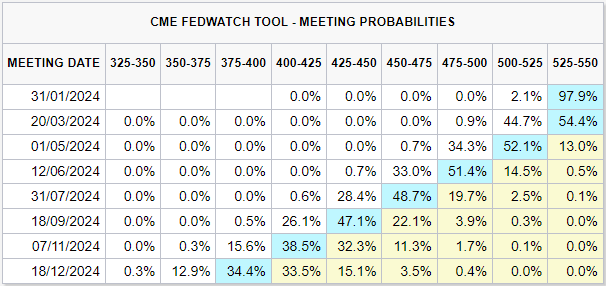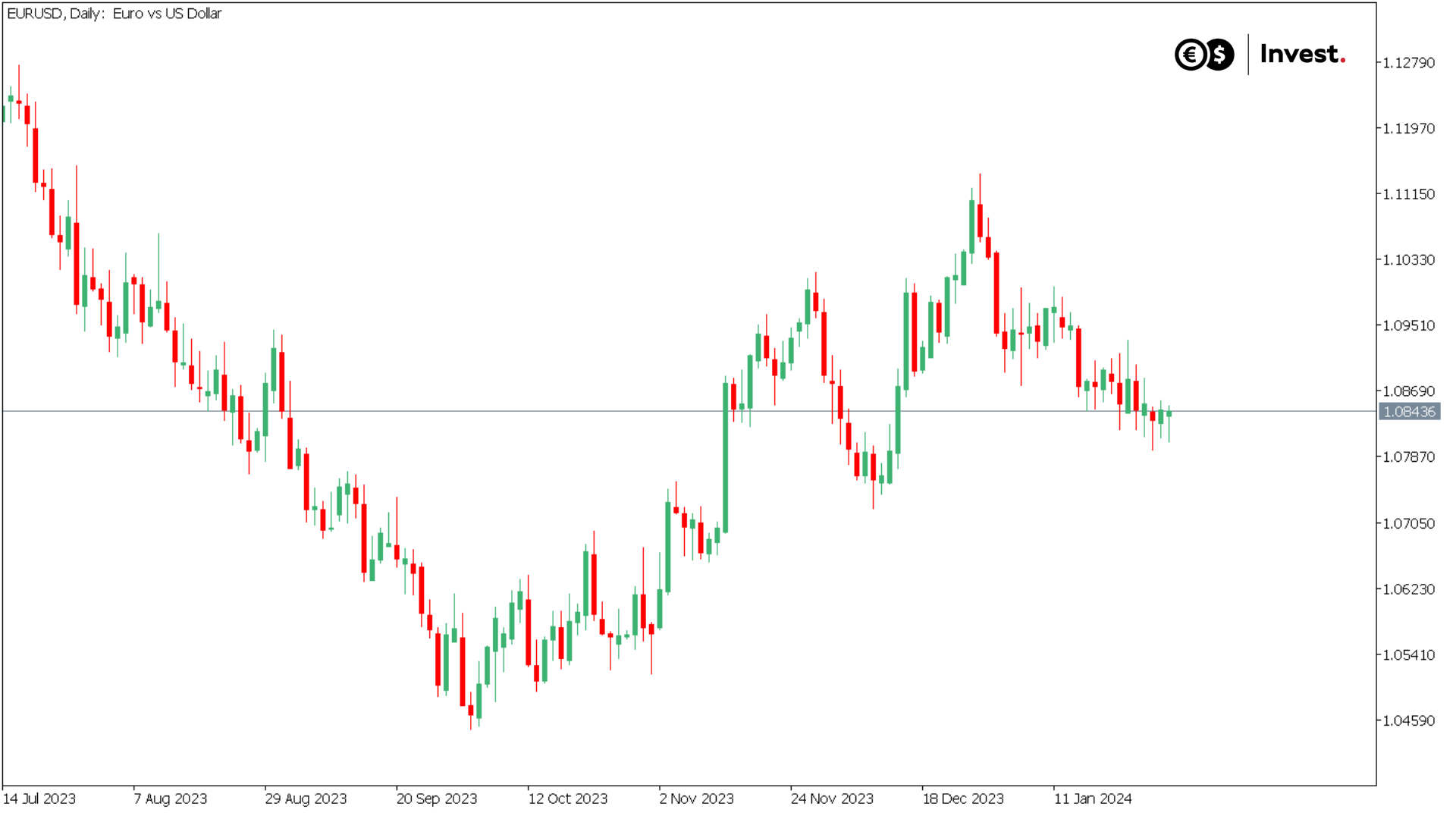A new US interest rate decision will be announced today. This will be the first meeting of the year and could prove crucial for markets throughout Q1 this year. The next FOMC meeting will not take place until the end of March. So let's consider what factors have historically influenced FOMC decisions, what the current economic situation is and how markets view the upcoming meetings to understand what we can expect at today's meeting.
Table of contents:
- What factors have historically influenced FOMC decisions most strongly?
- What is the current economic situation in the USA?
- How are markets pricing the upcoming FOMC meetings?
- What impact might today's meeting have on the USD and SPX exchange rate?
What factors have historically influenced FOMC decisions most strongly?
As we can read in the Fed's statutes, its main objectives are to maintain price stability, i.e. inflation at around 2%, and to support the economy by promoting full employment in the United States. To achieve these goals, the Fed uses various monetary policy tools that affect the demand and supply of balances, mainly banks, held at the Federal Reserve. The most popular of these is the recently significantly used interest rates.
What factors have had the greatest influence on interest rate decisions in the United States? An analysis of the long-term correlations between interest rates and the aforementioned factors shows that inflation, with a correlation of 0.66, has historically had the greatest impact on interest rate decisions, followed by the GDP reading, with a correlation of 0.51. It is also worth considering the unemployment rate, which has a correlation of 0.09. This correlation is mainly noticeable during periods of economic crises. However, it should be stressed that interpreting these factors as separate elements requires caution, as they show high intercorrelations. For example, negative GDP readings almost always negatively affect the labour market.

Source: Fred
What is the current economic situation in the USA?
From the December FOMC meeting, economic data indicated that US economic growth was slowing, with a continued strong labour market and declining inflation. Job growth had slowed and inflation rates were falling. The financial market reacted by anticipating a softer monetary policy. Expectations of interest rate cuts fell, but monetary policy remained restrictive, with signs of easing. The FOMC maintained interest rates and continued to reduce the Fed's balance sheet, highlighting inflation and slowdown risks.
Economic forecasts predicted a slowdown in GDP growth and a decline in PCE inflation to 2% in 2026. Economic growth slowed, but employment remained strong. Monetary policy remained restrictive with further reduction in the Fed's balance sheet, with moderate inflation and employment risks and uncertainty about the economic outlook.
Since the December meeting, we learned of two inflation readings. CPI inflation came in gently above forecasts, while PCE inflation was below expectations. In addition, the preliminary reading of the GDP rate showed growth of 3.3%, beating expectations of 2%. The Fed's balance sheet continues to steadily melt down, having already fallen by 13% year-on-year.

Source: Fred
How are markets pricing the upcoming FOMC meetings?
According to the CME FedWatch tool, which calculates the probability of future interest rates based on futures pricing, we observe that there is a 97.9% probability that interest rates will be held at the current meeting. It also shows that there is an 87% probability of an imminent cut, which could happen as early as May, and that rates could fall by as much as 1.5 percentage points by the end of this year. Hence, the market is currently not pricing in whether interest rate cuts will happen, but rather when they will happen.

Source: CME Group, FedWatch
What impact might today's meeting have on the USD and SPX exchange rate?
It seems that FOMC members believe that consumption levels are still strong enough not to start cutting interest rates yet in March. In the fourth quarter, the US economy grew by 3.3% on an annualised basis, clearly above market expectations. Private consumption grew by 2.8%, almost equalling the previous quarter's performance. The details of the data do not point to a growing risk of recession, but the likelihood of economic growth slowing down due to the depletion of savings accumulated during the pandemic and the full impact of the interest rate hike cycle is increasing with each passing month. For this reason, the May meeting seems a more realistic date for the start of easing. The European Central Bank (ECB), on the other hand, may not start reducing until the summer. The implementation of such a scenario would lead to an increase in the EUR/USD exchange rate. Problems with the continuation of the US dollar's rise confirm the negative outlook for the USD, in which the current rise should only be a correction in a downward trend.

Source: Conotoxia MT5, EURUSD, Daily
The increased expectation of an interest rate cut in the near future may also affect the stock market through falling borrowing costs, which in turn may benefit the value of equities. Therefore, it seems that more important than the interest rate decision itself will be President Jerome Powell's conference. The Fed chief's statements, especially if he announces faster interest rate cuts, could shape the narrative for the entire current quarter. In such a scenario, there is a high probability that this will have a positive impact on the price of the S&P 500 index.

Source: Conotoxia MT5, US500, Daily
Grzegorz Dróżdż, CAI MPW, Market Analyst of Conotoxia Ltd. (Conotoxia investment service)
Materials, analysis and opinions contained, referenced or provided herein are intended solely for informational and educational purposes. Personal opinion of the author does not represent and should not be constructed as a statement or an investment advice made by Conotoxia Ltd. All indiscriminate reliance on illustrative or informational materials may lead to losses. Past performance is not a reliable indicator of future results.
CFDs are complex instruments and come with a high risk of losing money rapidly due to leverage. 71.98% of retail investor accounts lose money when trading CFDs with this provider. You should consider whether you understand how CFDs work and whether you can afford to take the high risk of losing your money.


